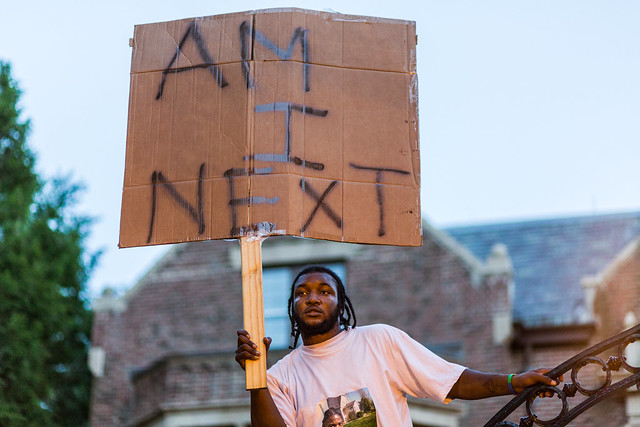Skip to main content

table of contents
Notes on Malcolm X
Malcolm X
Early Life
- Born to a family with 8 other children in Nebraska
- Malcolm’s mother was a homemaker and his father was a Baptist minister and supporter of Marcus Garvey
- Father killed by White Supremacists, when Malcolm was very young
- Mother committed to a mental institution. The children were raised in different foster homes and orphanages
Young Adult
- Graduated from Junior High top of his class
- X had a dream of becoming a lawyer but a teacher told him it was “no realistic goal for a n—–“
- Dropped out of school at age 15
- Eventually became coordinator of several narcotics, prostitution and gambling rings
- Sentenced in Boston to 10 years in jail on burglary charges– served 7 years
Jail Time
- Educated himself in jail
- His brother Reginald talked to him about Islam and the Nation of Islam (NOI)
- Elijah Muhammad believed in a nation-state for African-Americans
- Paroled in 1952, becomes a devoted follower of the NOI and changes his name to X
His Time with NOI
- Appointed Minister and National Spokesman
- Opened sections in Detroit, Michigan and Harlem
- Through his work, the organization grows from 500 members in 1952 to 30,000 n 1963
- Infiltrated and bugged by the FBI
- Marries Betty X and together they have six children (but twins born after his death)
Nation’s Teachings
- Black people are the original people of the world
- White people are “devils”
- Blacks are superior to whites
- The end of the white race is imminent
- Complete separation of black people. US state as transition to definite return to Africa
Issues with NOI
- Chicken coming home to roost statement in response to JFK assassination
- Malcolm is suspended for 90 days — no public speeches
- Elijah Mohammad’s sex life and illegitimate children
- Jealousy by NOI over Malcolm X’s fame and media attraction
Post NOI
- Mosque, Inc.
- Organization of Afro-American Unity (Pan African)
- Forges more connections with civil rights activists (including MLK Jr.)
- The Ballot or the Bullet
- Sunni Muslim
- Pilgrimage to Mecca
- Islam as a way to overcome racism
Appreciation Throughout Africa
- Malcolm X is invited to join governments of Egypt (Nasser), Algeria (Ben Bella), and Ghana (Kwame Nkrumah)
Malcolm X’s Intellectual Changes
- After visiting Africa, he no longer thinks that white and black people cannot collaborate to end racism
- Envisions Islam as a way to end racism
- Sticks to the idea of “by whatever means necessary”
Death Threats and Attempts Against His Life
- Both Elijah Muhammad and Louis Farrakhan (Boston) made public threats against his life
- His house was burned, and another house was bombed
- When giving a speech at the Organization of Afro-American Unity in Manhattan’s Audubon Ballroom, X was rushed and gunned down
Theories Around Who Assassinated Him
- FBI (COINTELPRO): John Ali, national secretary of the Nation of Islam, was identified as an undercover FBI agent. He exacerbated tensions with Muhammad
- Ali met with one of the convicted killers the night before the assassination
Malcolm X is Influential to Many Organizations, Namely The Black Panther Party
- 10,000 members and newspaper circulation of 250,000 (1969)
- Acquired celebrity status
- Free Breakfast for Children Program influenced by Maoist doctrine of serving the people
- Medical Clinics
- Free legal aids and bussing-to-prison programs
- Armed Citizen’s Patrol
- BPP Ten Point Program: Land, Bread, Housing, Education, Clothing, Justice and Peace
A protester participating in a Minnesota rally following the shooting and murder of Philando Castile by a St. Anthony Police officer.
Media Attributions
- Malcolm X in March 1964 © Ed Ford, World Telegram staff photographer is licensed under a Public Domain license
- Malcolm X and Family Visit Cassius Clay at Training Camp – Jet Magazine, February 13, 1964 © Vieilles Annonces is licensed under a CC BY-NC (Attribution NonCommercial) license
- Fred Hampton © Jacob Anikulapo is licensed under a CC BY-NC-SA (Attribution NonCommercial ShareAlike) license
- “Am I next?” – Justice for Philando Castile © Tony Webster is licensed under a CC BY-SA (Attribution ShareAlike) license